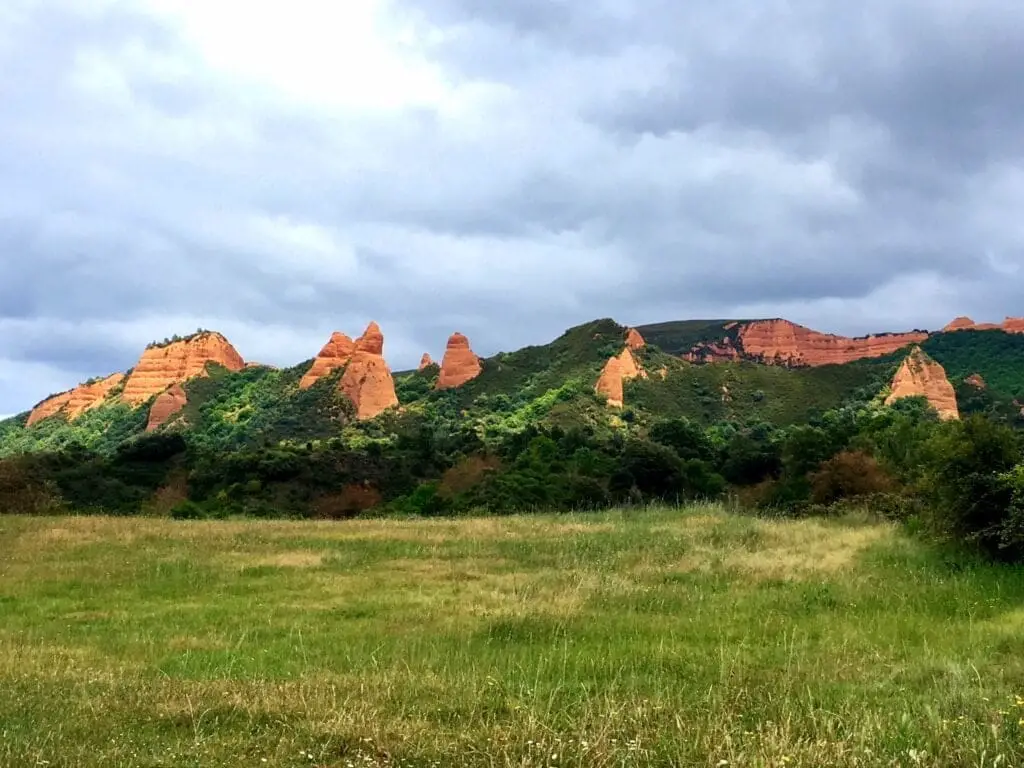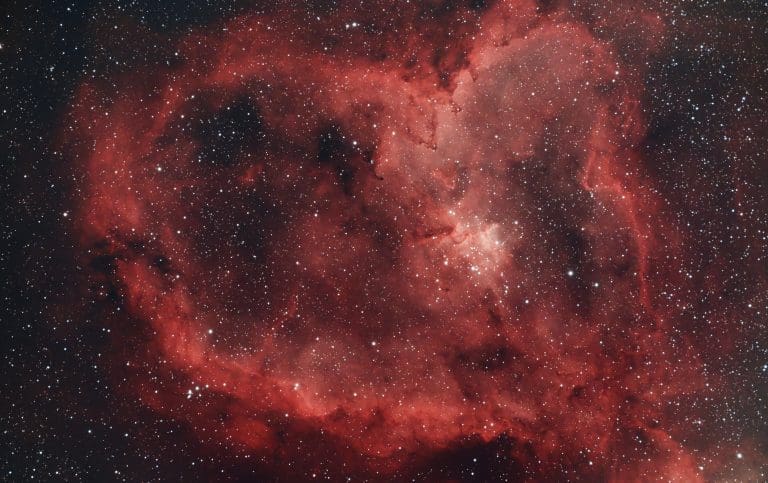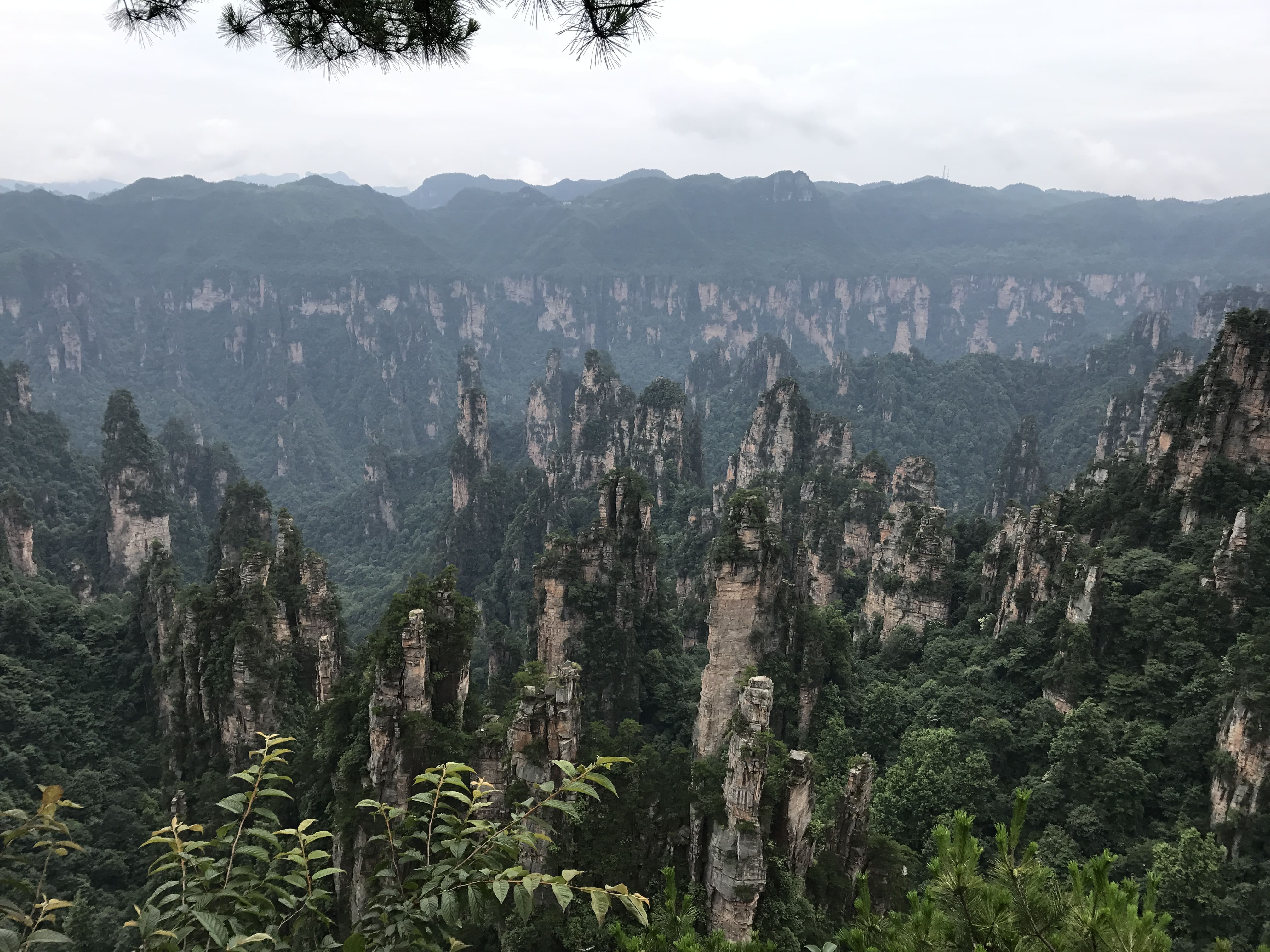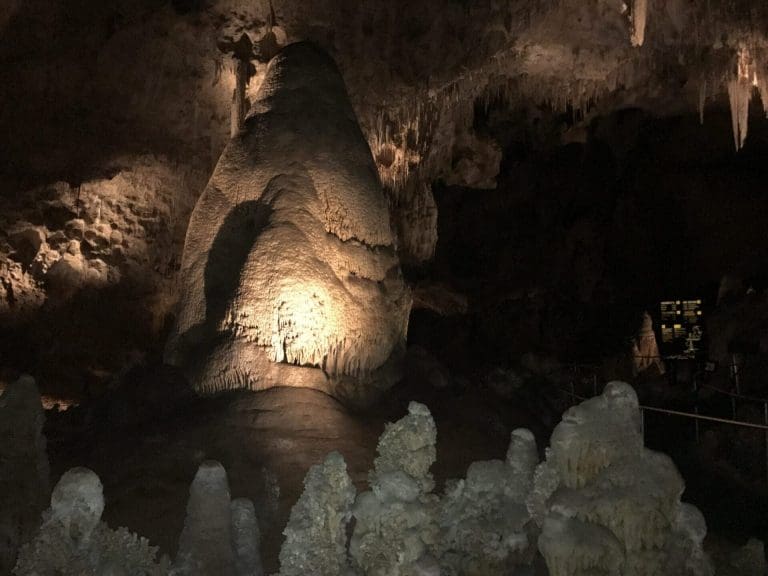Ancient Romans Exploding Mountains: Las Médulas
How did the ancient Romans “explode” anything in their quest to find gold? They didn’t exactly have dynamite back then. The answer lies in innovative technology that harnessed miners’ labor and hydraulic power to access the area’s gold deposits.
Las Médulas
If you visit Las Médulas today, you can still see the deep scars etched on the landscape. The stark terra cotta hills mined by the Romans stand out against a sea of green: the tree-covered hills of the surrounding area. These barren mountainsides are otherworldly in their beauty—but they are also proof of the drastic impact the Romans had on this environment. UNESCO even describes the area as “devastated” following the departure of the Romans after two centuries of mining activity.
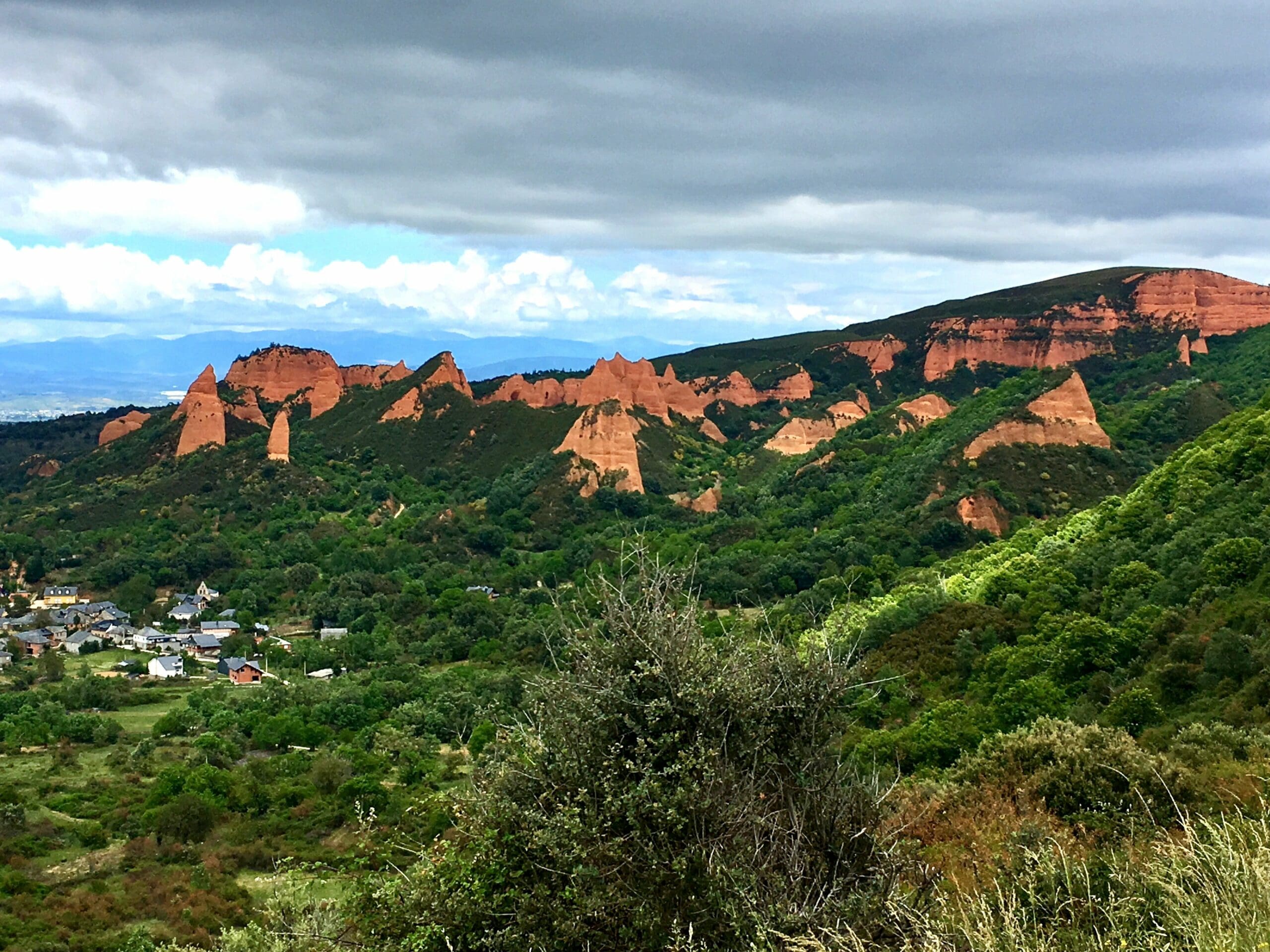
In the 1st century, Romans noticed flecks of gold in the red soil of northwestern Spain. Before long, they had established massive mining operations, dependent on the labor of some 60,000 workers. Who were these miners? Many were local to the area. Romans conquered this region of Spain c. 29-19 BC, around the same time the Republic became an Empire (27 BC). They then forced the conquered local residents to work in the mines.
We have a good understanding of how the mines worked thanks to Pliny the Elder’s Natural History (written c. 77-79):
The third method [of extracting gold] surpasses the labor of giants. Mountains are hollowed out by underground tunnels and excavated by torchlight, the duration of which measures the length of the work shifts. For months, miners don’t see the sun. These kinds of mines are known as arrugiae, and the collapses which happen suddenly crush the miners. So it would seem less reckless to go in search of pearls and purples at the bottom of the sea—we have made the land so much more dangerous!
Essentially, once miners determined that a particular mass of rock contained gold, they bored tunnels and passageways into the rock. Water was brought to the area and contained in a reservoir above the mining sites. Workers then channeled it into the tunnels and cavities that had been dug in the mountains. The force of this water rushing through narrow tunnels led the entire hillside to collapse, in a process known as ruina montium (fall of mountains). For further detail, and to view explanatory diagrams of this process, you can read the article by J. Aller et al.
As a procurator (high-ranking official) stationed in Spain, Pliny likely visited the mines and saw them for himself. In his Natural History, he has much more to say about gold and about the entire natural world. If you’re curious, you can read his entire work in translation or the original Latin text. Incidentally, Pliny the Elder is famous for his death in 79 AD following the eruption of Mount Vesuvius, which destroyed the city of Pompeii.
Multiple hiking trails allow visitors to explore Las Médulas. You’ll find panoramic views over the entire mining complex. And you can even get acquainted up-close and personal with some of the large caverns left from the mountainside collapses.
When I visited Las Médulas in June 2017, I first took the trail leading up to the caves themselves. Standing small next to a mass of rock stripped of all vegetation, I felt in awe of the sheer power necessary to cause such destruction.
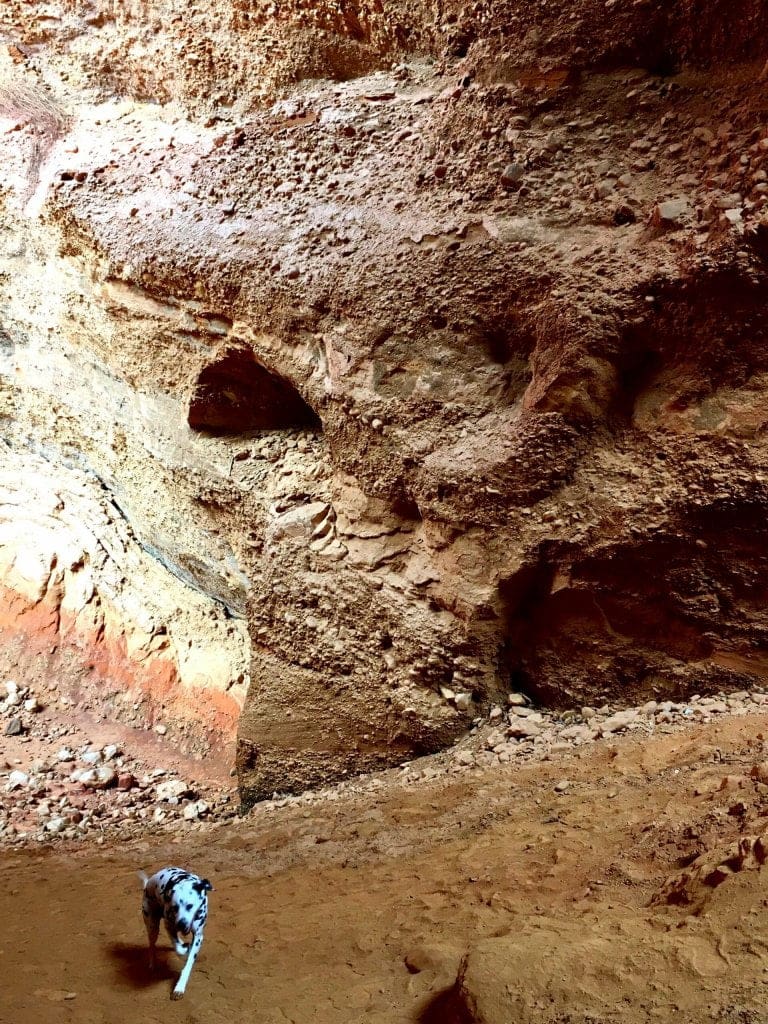
I then followed a second trail away from the mines themselves, seeking views over the entire landscape. After a short climb, the unmistakable red rocks came into view, rising out of the woods and overshadowing the small cluster of buildings below. It was hard to imagine at first what Las Médulas would have looked like if the Romans had never come here—but then I turned 180o and found my answer:
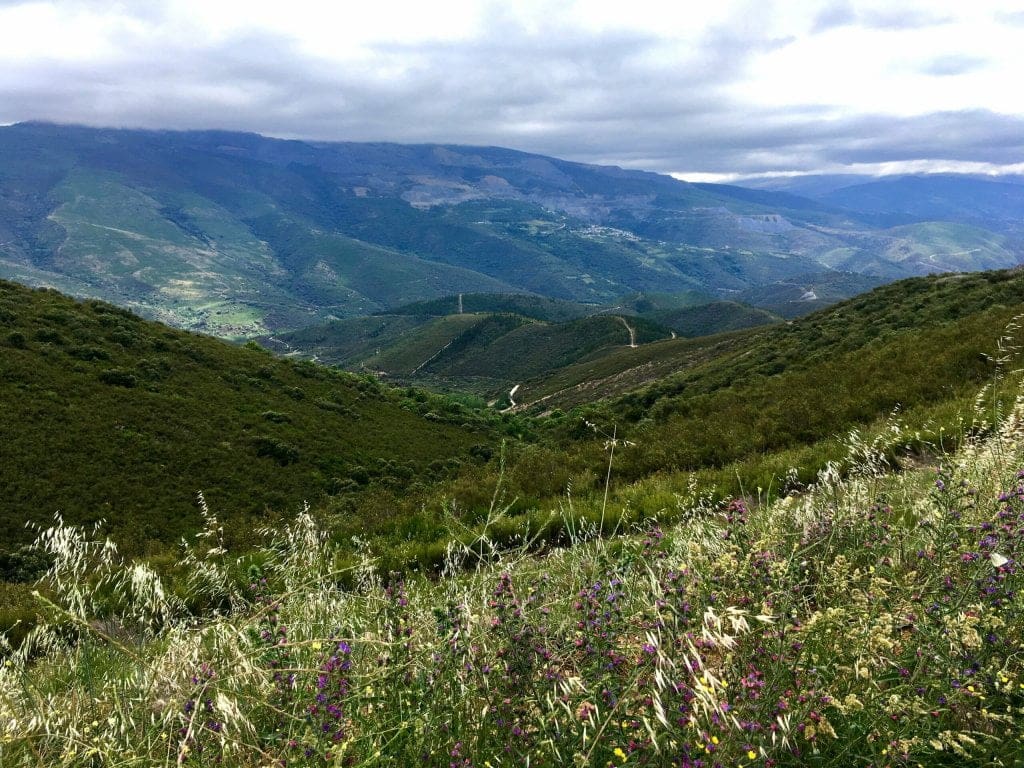
It’s easy to forget the complex and often dark history of Las Médulas due to its unique beauty and surreal landscape. But I think that knowing the history of this place adds to my appreciation for it. The ancient, abandoned mine is a dramatic testament to the impact humans have on our environment and our fellow humans. Sobering, yes, but a necessary reminder to act with care in our own lives.
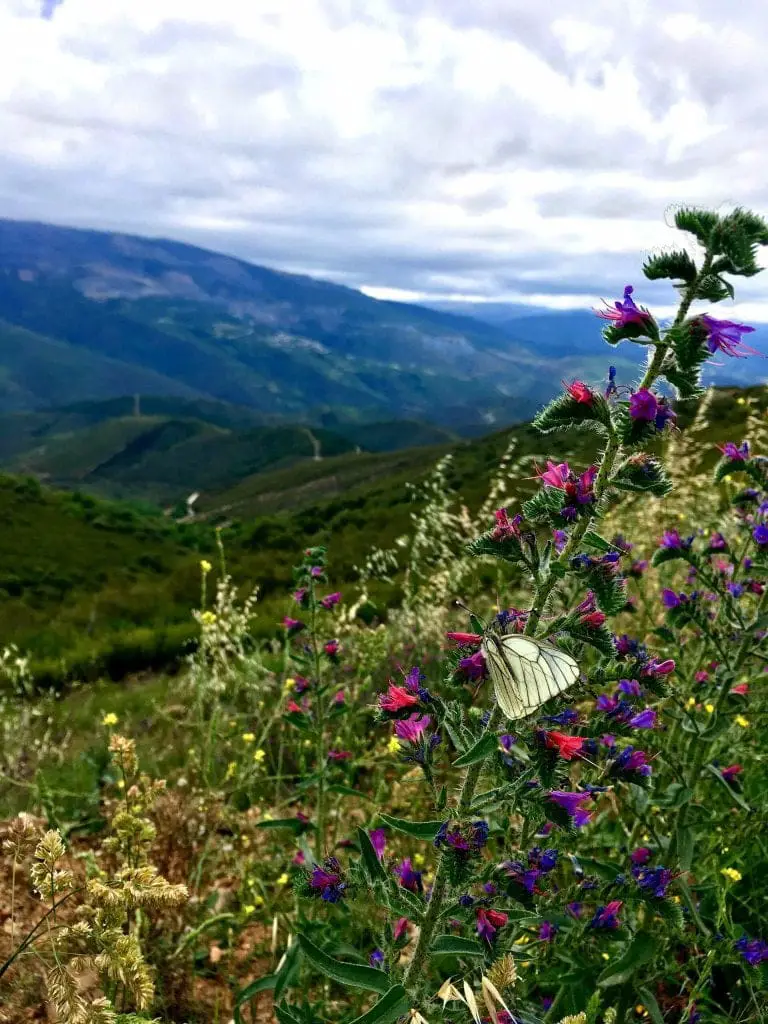
Pin it!


